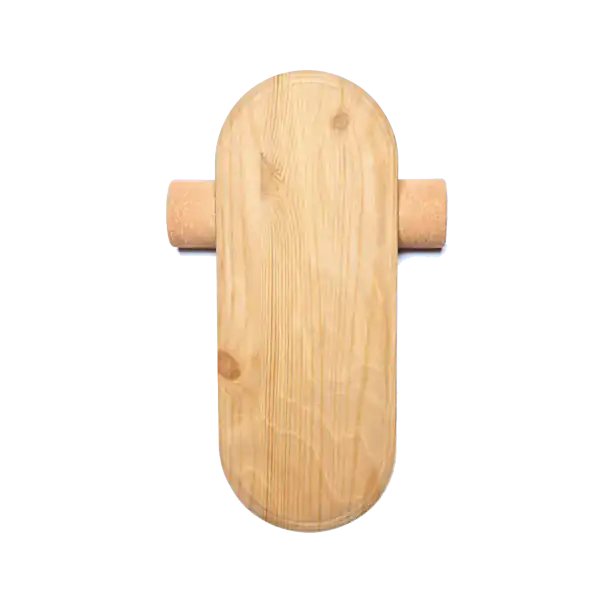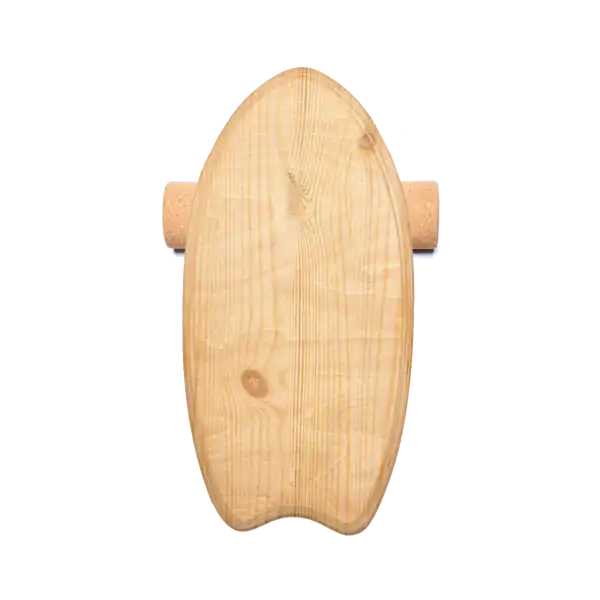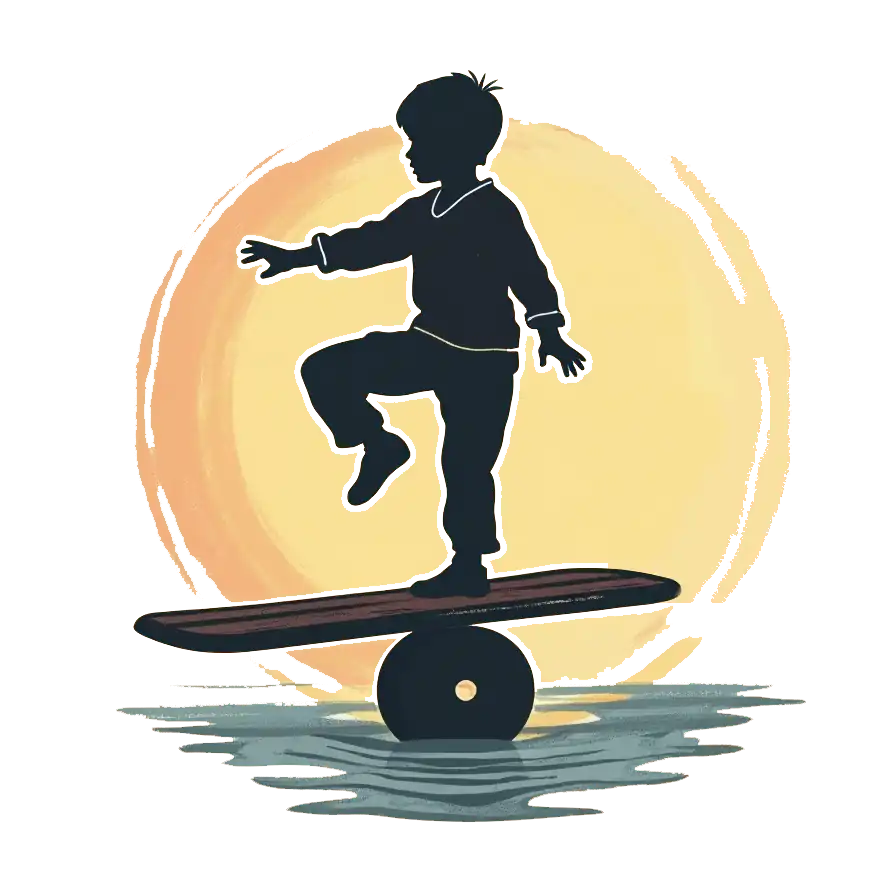Balance Boards for Home Fitness: A Complete Guide
Introduction
In the ever-evolving world of home fitness, balance boards have emerged as versatile and effective tools that offer substantial benefits without requiring extensive space or investment. These seemingly simple devices can transform your home workout routine by challenging your stability, strengthening your core, and improving your overall fitness. Whether you’re looking to enhance your athletic performance, rehabilitate from an injury, or simply add a new dimension to your home workouts, balance boards for home use can be the perfect addition to your fitness arsenal.
What Are Balance Boards?
Balance boards are training devices designed to create an intentionally unstable surface that challenges your balance and stability. By standing or performing exercises on these unstable platforms, you engage multiple muscle groups simultaneously, particularly your core and lower body stabilizers, which are often underutilized in traditional workouts.
Types of Balance Boards for Home Use
There are several types of balance boards available, each offering different levels of difficulty and benefits:
1. Wobble Boards
Wobble boards consist of a flat, round platform attached to a dome-shaped base. They allow movement in all directions, making them excellent all-purpose balance trainers. They’re particularly beneficial for ankle strengthening and rehabilitation.
Best for: Beginners and those focusing on ankle stability and basic balance training.
2. Rocker Boards
Rocker boards tilt in only one direction (either front-to-back or side-to-side). These boards limit movement to a single plane, making them slightly easier to use than wobble boards. They’re excellent for those just starting their balance training journey.
Best for: Beginners and those rehabilitating from specific injuries.
3. Roller Boards
Roller boards consist of a deck that sits on top of a cylinder or roller. These boards offer a greater range of motion and are considerably more challenging than wobble or rocker boards. They’re fantastic for more advanced users looking to improve their balance for sports like surfing, snowboarding, or skateboarding.
Best for: Intermediate to advanced users and those training for board sports.
4. Sphere and Ring Boards
These advanced balance boards feature a deck balanced on a small ball or sphere, allowing for 360-degree movement. They offer the greatest challenge and require significant core strength and balance.
Best for: Advanced users looking for maximum challenge.
5. Electronic Balance Boards
Some modern balance boards come with electronic components that can track your performance, offer guided workouts, or even gamify the experience through smartphone apps.
Best for: Tech-savvy users who enjoy tracking their progress.

The Classic Boarder Balance Board
Our flagship wooden balance board features a rounded deck crafted from pine with a clear grip finish. The Classic Boarder Balance Board provides the perfect balance of challenge and stability for all skill levels.
Benefits of Using Balance Boards for Home
Balance boards offer numerous benefits that extend beyond just improving balance:
1. Enhanced Core Strength
Balance boards require constant engagement of your core muscles to maintain stability. “The instability of the activity means that at any one time a whole range of muscles are working together rather than just one being targeted,” according to fitness experts at Swifty Fitness.
2. Improved Balance and Proprioception
Regular use of balance boards enhances your proprioception—your body’s ability to sense its position in space. This improvement translates to better coordination and reduced risk of falls in daily activities.
3. Injury Prevention and Rehabilitation
Research shows that balance boards can help prevent ankle sprains and other injuries by strengthening the muscles and ligaments around joints. Several studies indicate that “balance boards can help improve balance, boost coordination, and increase core and lower limb strength — and may decrease the risk of falling. They also decrease the risk of an ankle sprain, especially in repeat sprains.”
4. Full-Body Workout
While balance boards primarily target your core and lower body, they can be incorporated into exercises that work your upper body as well. From push-ups to planks, adding a balance board increases the difficulty and effectiveness of these movements.
5. Improved Posture with balance boards for home use
The core engagement required to use a balance board promotes better posture. Many individuals find that regular balance board training helps alleviate back pain associated with poor posture.
6. Low-Impact Exercise Option
Balance boards provide an effective workout without the high-impact stress that activities like running place on your joints, making them suitable for people of various fitness levels and ages.
7. Fun and Engaging
Unlike some repetitive exercise routines, balance board training remains challenging and engaging. The constant need to adjust and maintain balance keeps your mind engaged throughout your workout.
Top Balance Board Exercises for Home Fitness
Here’s a progression of exercises from beginner to advanced that you can perform with your balance board at home:
Beginner Exercises
1. Basic Balance Stance
- Stand with feet shoulder-width apart on the board
- Focus on a fixed point ahead
- Try to maintain balance for 30-60 seconds
- As you improve, try closing your eyes for an additional challenge
2. Straight Arm Rolls
“With your hands flat on the board, get into a press up position (you can make it easier by having your knees on the floor). Slowly, and in a controlled manner roll the board to the left. Roll the board back to the right, then into the middle and continue alternating equally on both sides.”
3. Squat + Hold
“Stand on the board and get your balance. Lower yourself down into a squat position, hold for a few seconds, slowly raise yourself back up. Repeat.”
4. Up and Down
“Stand with your feet shoulder width apart. Reach down and touch either end of the balance board with your hands. Stand back up and reach your hands to the sky.”
Intermediate Exercises
1. Tricep Dips
“Facing away from the board place your hands behind you on the board. Keep your feet together and flat on the floor with your knees bent. Slowly lower your body and bring yourself up. Repeat.”
2. Mountain Climbers
“Start in the press up position with your hands on the board and legs apart. Bring one leg up and into your chest, then back. Repeat with the other leg. Build up speed so you’re almost ‘running’ on the spot.”
3. Jump and Dip
“Stand on the board with your legs shoulder width apart. When you have your balance jump up in the air and land with your feet in the same position. Go dip your body down, and raise yourself back up to standing. Regain your balance, and repeat.”
4. Plank
“Get into a push-up position with your hands on the board. Keep them just a smidge wider than shoulder width. Work those core muscles, keeping your bod straight like an arrow. Extend your arms with a little bend. Don’t lock them. Hold it for at least 30 secs.”
Advanced Exercises
1. Balance Board Burpees
“Holding your board stand with your feet shoulder width apart next facing your cork roller. Lower yourself into a squat and place the board on the roller. Shift your weight onto your hands and jump your feet back into a plank position. Jump your feet back towards your board, stand up holding the board and lift it over your head. Lower yourself back into a squat and repeat the motion.”
2. Offset Push-Up
“Start in plank position again: hands on the board, arms straight, legs behind you. Slow and steady now, roll the board to one side just like in the straight arm roll. But this time, lower down into a push-up. Push yourself back up. Roll the board to the other side and repeat for 5–10 reps.”
3. Flamingo
“Stand on one foot in the middle of the board. Brace yourself so your other leg stays steady and elevated. Channel your inner flamingo for 30 secs (or as long as you can go). Switch legs.”
How to Choose the Best Balance Board for Home
When selecting a balance board for your home, consider these factors:
1. Your Fitness Level
Beginners should start with rocker or wobble boards, while those with more experience might prefer roller or sphere boards. As one Reddit user noted after using a balance board for just three days: “I’m most likely imagining things, but I feel better already after spending some time on it for 3 days!”
2. Intended Use
Consider what you want to achieve with your balance board:
- General fitness and core strengthening: Wobble boards are versatile options
- Sport-specific training (surfing, snowboarding): Roller boards mimic these sports better
- Rehabilitation: Rocker boards offer more controlled movement
- Standing desk complement: Anti-fatigue balance boards designed specifically for this purpose
3. Construction Quality
Look for boards made from durable materials that can withstand regular use. Wooden boards tend to be sturdy and reliable, while some models offer additional cushioning for comfort.
4. Size and Weight Capacity
Ensure the board is appropriately sized for your height and weight. Most boards have weight limits ranging from 150 – 200KG.
5. Surface Texture
A non-slip surface is essential for safety, especially if you’ll be using the board barefoot or in socks.
6. Adjustability
Some boards offer adjustable difficulty levels, which can be great for progressing over time without needing to purchase new equipment.
7. Price Point
Balance boards vary widely in price, from affordable options starting at just R800.00 to premium models with advanced features costing over R2000.00.
Safety Tips for Using Balance Boards for Home
While balance boards are generally safe, following these guidelines will help prevent injuries:
- Start on a Proper Surface: Use your balance board on smooth, hard surfaces or carpet. “Balance boards are safest when used on smooth, hard surfaces or carpet. Make sure the area around you is clear too.”
- Clear Your Space: Ensure there’s nothing nearby that you could hit if you lose balance.
- Consider Using Support: Beginners should practice near a wall or sturdy furniture for support if needed.
- Wear Appropriate Footwear: For most balance board exercises, bare feet or grip socks work best to maximize your connection to the board.
- Progress Gradually: Don’t rush to advanced exercises before mastering the basics.
- Use the Right Board: Choose a board appropriate for your skill level to minimize risk of injury.
- Warm Up First: Always warm up your body with light cardio and stretching before using a balance board.

Custom Balance Board
Want something uniquely yours? We can create a custom balance board tailored to your specifications. Choose your wood type, dimensions, design elements, and difficulty level.
Incorporating Balance Boards for Home Use Fitness Routine
To get the most out of your balance board, try these strategies:
- Start Small: Begin with 5-10 minutes per day and gradually increase duration as you improve.
- Combine with Other Exercises: Use the balance board as one component of a more comprehensive workout routine.
- Create a Progressive Program: Plan your balance board training to advance from basic stability exercises to more challenging movements over time.
- Use During Breaks: If you work from home, take short breaks to spend a few minutes on your balance board for mental refreshment and physical benefits.
- Make It a Family Activity: Balance boards can be fun for children and adults alike (with appropriate supervision).
- Track Your Progress: Keep a journal of how long you can maintain balance or how many repetitions of each exercise you complete to monitor improvements.
Final word on the best balance board for home use
Balance boards for home use offer a unique and effective way to enhance your fitness routine. With benefits ranging from improved balance and core strength to injury prevention and rehabilitation, these versatile tools deserve a place in your home gym setup. By starting with the right board for your skill level and gradually progressing through increasingly challenging exercises, you can experience significant improvements in your stability, strength, and overall physical performance.
Whether you’re a fitness enthusiast looking for a new challenge, someone recovering from an injury, or simply wanting to improve your balance and posture, a balance board provides an accessible and engaging way to achieve your goals right from the comfort of your home.
References
- Swifty Fitness. “Balance Board Exercises For All Abilities – Beginners to Pros!”
- Greatist. “Balance Board Exercises: Boost Balance and Fitness Safely”
- Mayo Clinic. “Maintaining equilibrium — The benefits of balance boards”
- BarBend. “Best Balance Boards (2025)”
- Women’s Health. “9 Best Balance Boards For Strength And Stability, Tested By Experts”
